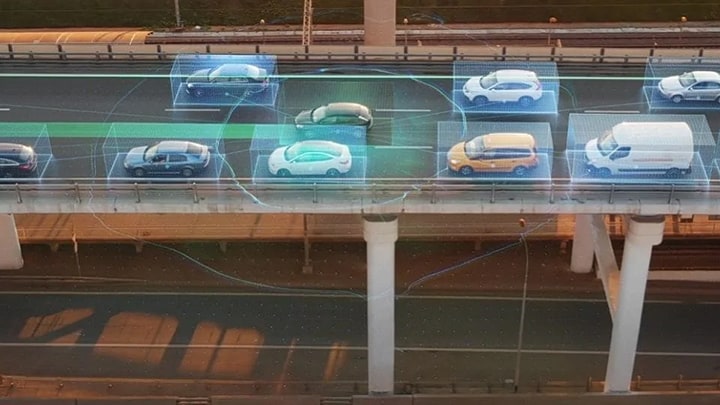Dragonflies can see in nearly every direction at the same time – and
with their field of vision, they can see you even after they’ve flown
by. Similar to the dragonfly, radar in a car can help the car
“see” where you don’t see.
Radar can see ahead of you, behind you and all around you, giving you a
comprehensive 360-degree view of your environment on the road. It can see and
track multiple objects including cars, bicyclists, stationary objects –
anything in the vicinity of the car. And, like the brain of a dragonfly, the
processor “brain” of the car can fuse data from radar, together
with camera, lidar, or other sensor information, to form a complete map of the
environment. Using this data, the optimal steps can be identified and motors
can be activated for the ideal direction.
Radar sensors are essential components for today’s advanced driver
assistance systems (ADAS), delivering functions such as automatic emergency
braking, advanced cruise control, collision avoidance, blind spot monitoring
and detection, lane change and departure assistance and vulnerable road user
detection.
With radar-based collision avoidance systems, for example, the car
“sees” and tracks the distance of a moving car ahead. If the
driver fails to slow the car from an imminent collision, the car can quickly
react by warning the driver or taking actions such as emergency braking or
evasive steering.

NXP won the prestigious automotive innovation award – the Best
Dutch Innovation – for our ultra-compact radar transceiver TEF801X
that pioneers the way towards safe autonomous driving.
360-degree radar sensing doesn’t have to be bulky
To provide a 360-degree view of the surroundings, radar sensors are placed all
around the car. At each sensor point, NXP chips are used to generate,
transmit, receive, digitize, process, and communicate the radar signals. The
number of sensors around the car can add up to a dozen or more! This bulky
size can be an integration challenge for car OEMs. That’s why our
engineers created a tiny, postage-stamp size radar sensor.
Ultra-compact makes it easy to integrate into car design

TEF810X chip uses RFCMOS technology for ultra-compact and scalable radar
systems
NXP products like our
MR2001 77 GHz radar transceiver chipset,
ultra-reliable MPC577xK processor
and award-winning TEF810X chip using RFCMOS technology deliver ultra-compact and scalable radar system design. This
combination of high performance and high integration makes it possible to
reduce the size of radar sensors by 50 percent, from the size of a deck of
cards to the size of a postage stamp.
Radar sensors made with NXP chips are small, low power, and easy to physically
mount on the vehicle. Recently Hella announced its new Radar Generation
CompactRadar that uses this technology. Watch how it works on the front bumper
of a car.
Boost in affordability – and energy savings
Thanks to innovative high-performance circuitry inside the NXP chips, the
radar sensors operate at less than 5W of power consumption, allowing tiny size
and flexible location of multiple sensors all around the car.
Radar paves the way for improved traffic safety
About 1.3 million people die in road fatalities every year, and radar-based
safety systems can help reduce that number, making roads around the world much
safer.
The European New Car Assessment Programme (NCAP) has researched the effect of
Autonomous Emergency Braking, concluding that it can reduce the number of
rear-end collisions by 38 percent. In its requirements for 2020, the NCAP
places emphasis on vulnerable road users, such as pedestrians and cyclists.
Radar sensors equipped with the NXP radar chip have been designed to rigorous
safety standards guaranteeing the highest level of safety performance
for reliable operation.
This is why NXP invests a great effort and passion in making the radar
technology better, smaller, and more affordable.
Growth is incredibly fast — and this is just the start
In this fast-growing market, NXP’s growth is even faster —
shipping more than half of all new radar sensors in 2016. And as we look to
the future, we see we are just at the beginning of the radar ramp up. In the
near future, we see even more applications emerging for radar including
parking, real-time imaging, and more. We see increasing need for high
performance processing, exceptional security, and true multi-channel,
multi-mode operation. We will see the continued integration trend pushing
towards even smaller true “single chips” which promise even
further savings in size and power, while maintaining high performance. Stay
tuned for more updates as we continue this very exciting ride to the top.






